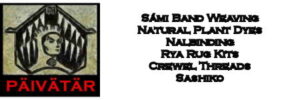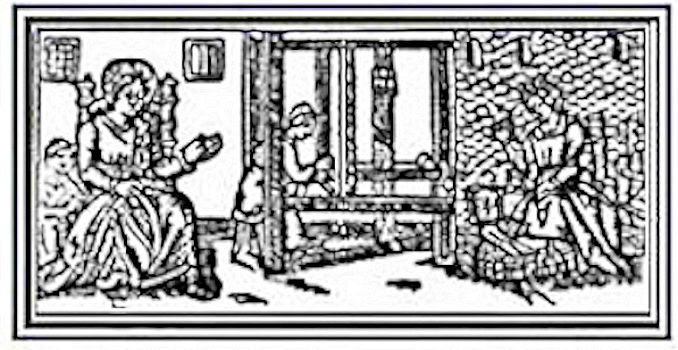Several years ago, I had the great fortune to learn to spin. I took an intensive 12 week Handspinning course, taught by Judith MacKenzie, through the Kootenay School of the Arts. We learned how to sort a fleece, spin in the grease, and wash the fleece. Wool-combing, carding, blending roving to create heathered tones are all techniques that create different types of yarns. Spinning from quality top and luxury yarns, mohairs, angora, cashmere all added to the range of gourmet yarn creation. Judith now teaches workshops throughout the U.S. If you ever have an opportunity to take one of her classes, do so. I’m sure you will enjoy it.
One of the first things I learned is that wool yarns can be classified into 2 main categories, worsted and woollen. Worsted yarns are smooth, quite strong and long-wearing. They are used for woven clothing such as men’s suits. A true worsted yarn is spun from the longer fibers of the fleece. The fiber is usually combed with wool combs. This removes the shorter fibers and bits of dirt that may be in the fiber. Combing keeps the longer fibers in parallel order. The shorter fibers can be used to spin a woollen yarn. Commercially prepared top can also be used for worsted spinning, when you don’t want to do all the prep work yourself.
Worsted Spinning
To spin a worsted yarn, the spinning technique is quite controlled. If you are drafting with your right hand, pinch the thumb and forefinger of your right hand together to control the twist. Do not let the twist travel past the drafting triangle. If you are having trouble and the twist is traveling past your hand and making a nasty lump in your yarn, slow your wheel down a bit by loosening the tension on the bobbin slightly.
Shetland Top – Worsted Spinning
0:00 Join fibre and begin spinning
0:40 Stop and check the twist
0:60 Join yarn and restart spinning
1:00 Stop and pick out veggie matter
1:25 Restart spinning
Woollen Spinning
Woollen spun yarns are loftier and softer. The fiber is shorter and is usually carded rather than combed. This results in fibers that go in different directions rather than parallel, incorporating more air into the yarn. Woollen yarns are more suitable for knitting, sweaters or fluffy blankets.
You Tube – Woolen Long Draw Spinning
More about Wool Yarns
- Wool Processing
The Sheep USA site describes the qualitative and quantitative evaluation of wool. - Coldharbour Mill
The Coldharbour Mill has been spinning both wool and worsted yarns for nearly 200 years. - http://www.inetdesign.com/wolfdunn/wolfyarn/ Turn Wolf Fur into Yarn
Jerilyn Monroe tells how she turned her dog’s fur into yarn using a drop spindle (woollen spun, I think) - Spinners Guild Glossary
An SCA glossary of spinning terms.
 LONGTHREAD MEDIA VIDEO
LONGTHREAD MEDIA VIDEO
 LONGTHREAD MEDIA SUBSCRIPTIONS
HANDWOVEN MAGAZINE
PIECEWORK MAGAZINE
SPINOFF MAGAZINE
LEARN LONGTHREAD MEDIA
PAIVATAR HANDMADE
LONGTHREAD MEDIA SUBSCRIPTIONS
HANDWOVEN MAGAZINE
PIECEWORK MAGAZINE
SPINOFF MAGAZINE
LEARN LONGTHREAD MEDIA
PAIVATAR HANDMADE
 Paivatar on YouTube
Visit my YouTube channel for how-to craft videos.
Paivatar on YouTube
Visit my YouTube channel for how-to craft videos.
Or Please visit my Channel on Rumble for more how-to videos.
https://rumble.com/Paivatar
LIVE STREAMS - Paivatar Studio
KICK
TWITCH MAKERS&CRAFTING
YOUTUBE
Categories: HAND SPINNING, Handspun Yarns, Videos



